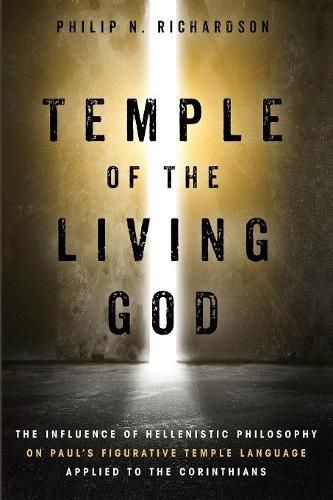Readings Newsletter
Become a Readings Member to make your shopping experience even easier.
Sign in or sign up for free!
You’re not far away from qualifying for FREE standard shipping within Australia
You’ve qualified for FREE standard shipping within Australia
The cart is loading…






This title is printed to order. This book may have been self-published. If so, we cannot guarantee the quality of the content. In the main most books will have gone through the editing process however some may not. We therefore suggest that you be aware of this before ordering this book. If in doubt check either the author or publisher’s details as we are unable to accept any returns unless they are faulty. Please contact us if you have any questions.
When writing to the Corinthians, the Apostle Paul used figurative temple language repeatedly to shape the identity of his audience (Temple of God, Temple of the Holy Spirit, and Temple of the Living God). While other scholars have identified the place of the Jerusalem temple in Paul’s thinking or the impact of temples in the life of Corinth, there has been no comprehensive study of the way that figurative temple language in philosophy could have influenced the Corinthians’ worldview. Hellenistic philosophy was pervasive in the first century and provided theological guidance for faith and practice to Paul’s Gentile audience before their conversion. Philip N. Richardson provides a comprehensive survey of figurative temple language in Hellenistic philosophy, shedding light on the way that the kinds of philosophical thought known in cities like Corinth may have influenced the Corinthians to think about figurative temple language. This study throws into sharp relief the similarities and differences between Paul’s use of temple language and that of philosophy, and illuminates Paul’s setting of this language in the wider framework of 1-2 Corinthians and his purpose for its use in the argument of the letters.
$9.00 standard shipping within Australia
FREE standard shipping within Australia for orders over $100.00
Express & International shipping calculated at checkout
This title is printed to order. This book may have been self-published. If so, we cannot guarantee the quality of the content. In the main most books will have gone through the editing process however some may not. We therefore suggest that you be aware of this before ordering this book. If in doubt check either the author or publisher’s details as we are unable to accept any returns unless they are faulty. Please contact us if you have any questions.
When writing to the Corinthians, the Apostle Paul used figurative temple language repeatedly to shape the identity of his audience (Temple of God, Temple of the Holy Spirit, and Temple of the Living God). While other scholars have identified the place of the Jerusalem temple in Paul’s thinking or the impact of temples in the life of Corinth, there has been no comprehensive study of the way that figurative temple language in philosophy could have influenced the Corinthians’ worldview. Hellenistic philosophy was pervasive in the first century and provided theological guidance for faith and practice to Paul’s Gentile audience before their conversion. Philip N. Richardson provides a comprehensive survey of figurative temple language in Hellenistic philosophy, shedding light on the way that the kinds of philosophical thought known in cities like Corinth may have influenced the Corinthians to think about figurative temple language. This study throws into sharp relief the similarities and differences between Paul’s use of temple language and that of philosophy, and illuminates Paul’s setting of this language in the wider framework of 1-2 Corinthians and his purpose for its use in the argument of the letters.